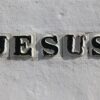Crisis that could have been avoided has taken a tragic turn as Palestinians clashed with Israeli forces in Jerusalem following the flag march.
At least 33 Palestinians were injured in clashes with Israeli security forces while Police arrested 17 Palestinians in east Jerusalem amid high tensions surrounding the Jerusalem flag march.
According to media reports, dozens of Palestinians rioted in streets close to the march’s route and threw stones at police officers, injuring two, as Police dispersed them. The flag march was supposed to take place on Jerusalem Day in May but was postponed due to Operation Guardian of the Walls.
Palestinians clashed with security forces in the area in front of Damascus Gate about two hours before the marchers arrived, videos from the scene that circulated on social media showed.
Some 2,000 police officers and Border Police officers were deployed throughout the Old City on Tuesday, and metal barriers were erected to prevent Palestinians from reaching the Damascus Gate area.
Israeli security forces were deployed on the Temple Mount. At least two Palestinians were arrested, and four others were removed from the Temple Mount, Palestinian.
Thousands of right-wing marchers participated in the Jerusalem flag march in high spirits but under heavy police protection Tuesday evening. The event had raised concerns of renewed violence with Hamas and tensions with Arab-Israelis.
Buses brought marchers from at least 29 locations, including settlements in Judea and Samaria, Beersheba, Beit She’an, Petah Tikva, Bat Yam and elsewhere.
The number of participants was far smaller than in previous years, and the march was relatively peaceful. The marchers chanted songs such as “Am Yisrael Chai,” “The nation of Israel is not afraid” and similar refrains.
However, racist chants of “Death to Arabs” and nationalistic chants were shouted by some of the marchers. In one incident outside Damascus Gate, a marcher and an east Jerusalem Arab resident became embroiled in a brief spat.
On the way down from the city center to Damascus Gate, at least two small groups of marchers shouted various nationalistic slogans and songs at Palestinian east Jerusalem residents on the other side of police barriers.
Some marchers held posters featuring Prime Minister Naftali Bennett and called him “a liar,” while others chanted, “Bennett is a traitor.”
The march gathered on Hanevi’im Street, where a band played Jewish music and the attendees danced.
The march then set off down Sultan Suleiman Street on its way to Damascus Gate, where participants staged the traditional flag dances outside the landmark, before continuing outside the walls of the Old City to Jaffa Gate.
In a change of plans, men were directed through the Jewish Quarter, having originally been set to go through the Arab market, and women were sent through the market instead.
Several far-right leaders were present at the event, including Religious Zionist Party MK Itamar Ben-Gvir, who was warmly greeted and held aloft on the shoulders of those dancing at Damascus Gate.
Religious Zionist Party leader Bezalel Smotrich and his party colleague MK Orit Struck also attended.
“This march is very important,” Struck said. “It shows that the Jewish people control Jerusalem, not Hamas.”
Far-right political activist Bentzi Gopstein, director of Lehava, an Israeli Jewish anti-assimilation organization, was also present, together with far-right activist Baruch Marzel.
A spokesman for the Im Tirtzu organization, one of the organizers of the march, rejected claims that the march was a provocation.
“It’s not a provocation in a democratic country for citizens to wave their national flag in their capital,” the spokesman said.
“We cannot let Hamas dictate to us what is provocation and what’s not, and what is moral and what is not,” the spokesman said. “We are celebrating the reunification and liberation of Jerusalem, including the whole city. To suggest we can only walk through parts of the city is admitting we don’t have sovereignty over the city.”
Daniel Seidemann, a longtime activist for Palestinian rights in east Jerusalem, said he and others had worked to have the march rerouted through the Armenian and Jewish Quarters of the Old City, where it would not arouse any anger, but had failed.
“There were routes that were equally Jerusalem, equally Old City, equally convenient, which could have been taken without having to deploy the Iron Dome,” he said.
“There is nothing sacred about Damascus Gate, but it is important to the Palestinians,” he added. “Provocation is a feature [of the march], not a bug.”
Just before the march began, Ra’am (United Arab List) Party leader Mansour Abbas condemned the event, calling it “an unbridled provocation whose purpose is shouting, hate, incitement to violence and an attempt to inflame the region for political purposes.”
Abbas said Public Security Minister Omer Barlev (Labor) and the police should have canceled the event.
“There is no doubt that the goal of the march organizers was to challenge the new government and exhaust it with a series of explosive incidents in the coming period and set us back with unnecessary escalations that will endanger lives,” he said.
Ben-Gvir said Bennett was “marching with the leftist government” instead of in the flag parade.
“This is the face of the Bennett government,” he said. “The base of their coalition opposes the flag parade in Jerusalem and calls it a provocation. Instead of Naftali Bennett marching with us, he is marching with an extreme left-wing government. We will not fold in Jerusalem, the capital of the Jewish people.”
And Arab journalists covering the event were verbally abused with racist and insulting comments by some participants.























